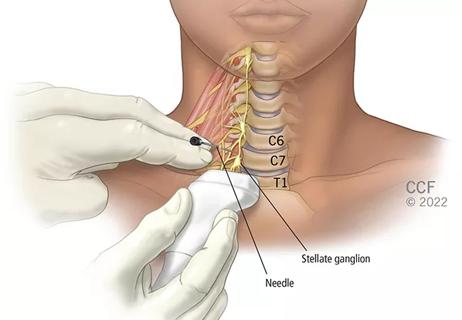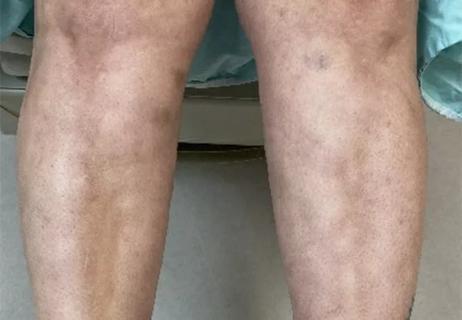
In the wake of the COVID-19 pandemic, Cleveland Clinic began using telemedicine and virtual health strategies to provide care for patients – especially in primary care and home care settings. In the span of just five weeks, from March 7 to April 11, Cleveland Clinic outpatient visits increased from 2% remote (virtual or phone) to 75% remote.
Advertisement
Cleveland Clinic is a non-profit academic medical center. Advertising on our site helps support our mission. We do not endorse non-Cleveland Clinic products or services. Policy
“In the early stages of this pandemic, we did not know a lot about how the virus behaved and affected people. So out of an abundance of caution, any visit that could be done virtually was done virtually,” says Kristine Adams, MSN, CNP, Associate Chief Nursing Officer of Care Management and Ambulatory Services. “Telemedicine was critical in this stage to keep our patients safe yet engaged in their ongoing care, preventing worsening of disease and potential infection with the virus.”
To quickly and effectively ramp up telehealth services, several steps were taken almost simultaneously. Cleveland Clinic expanded telehealth privileges, trained and reorganized its workforce (including nurses), and created new documentation and workflows. “Our ambulatory care management nurses pivoted quickly to a virtual and telephonic platform to manage our highest risk chronic disease patients, as well as our COVID-positive patients who were not in hospital but being monitored for signs and symptoms at home,” says Adams.
Since March, Cleveland Clinic has been home monitoring patients diagnosed with COVID-19. Nurses and care coordinators provide outreach to COVID-positive and suspect patients. In addition, the health system trained an interdisciplinary team to help make calls, including child life specialists, audiologists, ophthalmic technicians and others.
Using a unique technology available through Epic’s MyChart, Cleveland Clinic was the first healthcare system to customize MyChart Care Companion to enhance the Home Monitoring Program for COVID-19 patients. Michelle Card, MSN, RN-BC, CCCTM, Manager for Primary Care Coordination, led the COVID-19 Home Monitoring Program team, which operates seven days a week from 8 a.m. to 8 p.m.
Advertisement
Cleveland Clinic offers the program to every patient who tests positive for COVID-19 at the healthcare facility or is suspected of having it. Patients must agree to be enrolled in the easy-to-use program, which is available through their MyChart account on a mobile app or website.
“Once the COVID-19 test comes back positive, we reach out to the patient to learn more about their symptoms, provide education, offer support and help them sign up for the MyChart Care Companion platform,” says Card. “At that point, the health department has also been in touch with the patient for contact tracing and isolation/quarantine guidance. We are here to help them manage their symptoms from day to day.”
For 14 days, patients receive a daily questionnaire about shortness of breath, cough, weakness and other symptoms, and if they are better, the same as or worse than yesterday. Patients with a thermometer are asked to record their temperature, and patients with a pulse oximeter are asked to record their oxygen reading.
Any worsening symptom response triggers a real-time message to a pool of registered nurses, prompting a phone call to the patient to further assess and determine next steps, such as additional care at home, a virtual visit with a provider or getting to an emergency department if necessary.
“A diagnosis of COVID-19 causes a lot of stress and anxiety for patients,” says Card. “Our regular contact helps to alleviate some of that anxiety by providing ongoing support, human contact during a time of isolation and reassurance to the patient that we are watching for those MyChart Care Companion responses.”
Advertisement
Ultimately, the program is intended to address emergent symptoms sooner, preventing hospital admissions and an inpatient surge. But it’s also designed to increase patient engagement. In addition to reporting symptoms, patients can use the platform to access resources about stress and other COVID-centric health topics. Patients who are clinically recovered are connected with their primary care provider to help manage any lingering or long-term symptoms of COVID.
Soon into the pandemic, it became clear that patients with chronic diseases were not visiting their physicians. “During this pandemic, it is critical that we don’t minimize the importance of supporting our patients with chronic conditions,” says Card. “We need to be proactive in assessing them for subtle changes that can be addressed before they decompensate, resulting in hospitalization that could impact their risk even more.”
To ensure that the health of patients with chronic conditions was being managed, Cleveland Clinic began using the MyChart Care Companion platform to monitor these patients at home. Nurses and care coordinators also called patients weekly, using a standard template to guide the conversation. They began by asking if patients had any new or worsening symptoms they would like to discuss with their physician. If they did, then the caregiver asked what the symptom was, whether it was new, how long they had it and whether it was getting better, worse or staying the same. Patients’ responses led to the following actions:
Advertisement
Collaborating with many healthcare providers and leveraging technology allowed nurses to reach more patients, address changes in their health and connect virtually with the right providers, says Card.
“Our priorities are to keep our patients with chronic conditions well at home, ensure they have the medications they need, provide education on how to remain safe and reduce their chance of contracting COVID-19, support the stability of their chronic disease and provide for any psychosocial needs,” she says.
Earlier this year, Adams joined a webinar hosted by a local chamber of commerce in Northeast Ohio on how businesses can safely re-open during the pandemic. She provided recommendations for keeping employees and customers safe that focused on the importance of three main actions: screening, cleaning and distance in-between(ing).
The chamber of commerce reached out to Cleveland Clinic to present the webinar as part of the healthcare organization’s new Ask A Nurse program. Launched in August, Ask A Nurse features a team of Cleveland Clinic nurse experts who support community organizations, including faith-based organizations; congregate housing, such as nursing homes, assisted living facilities and homeless shelters; state, county and federal government entities; and 501(c)(3) nonprofits. The program is free to organizations in Cleveland Clinic communities.
Through the Ask A Nurse program, a team of six nurses offers a variety of support, including the following:
Advertisement
The program is part of a larger initiative spearheaded by Chief Caregiver Officer Kelly Hancock, DNP, RN, NE-BC, FAAN, and Chief Clinical Transformation Officer James Merlino, MD, to provide evidence-based guidance to businesses and other organizations in the community at large. In addition to nursing, other groups within the healthcare system have agreed to serve as a resource, including Occupational Health, Market and Network Services, Infectious Disease and Quality.
“When this pandemic hit, financial fears and the urgency to open back up were palpable,” says Adams. “People needed a clearinghouse to ask their specific questions and not wade through potentially wrong information from the news media. They trusted Cleveland Clinic. We gave them practical, straight-up answers, and we shared our best practices here at Cleveland Clinic.”
Advertisement

Patients report improved sense of smell and taste

Clinicians who are accustomed to uncertainty can do well by patients

Unique skin changes can occur after infection or vaccine

Cleveland Clinic analysis suggests that obtaining care for the virus might reveal a previously undiagnosed condition

As the pandemic evolves, rheumatologists must continue to be mindful of most vulnerable patients

Early results suggest positive outcomes from COVID-19 PrEP treatment

Could the virus have caused the condition or triggered previously undiagnosed disease?

Five categories of cutaneous abnormalities are associated with COVID-19